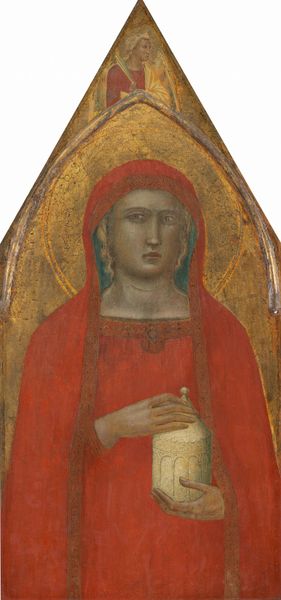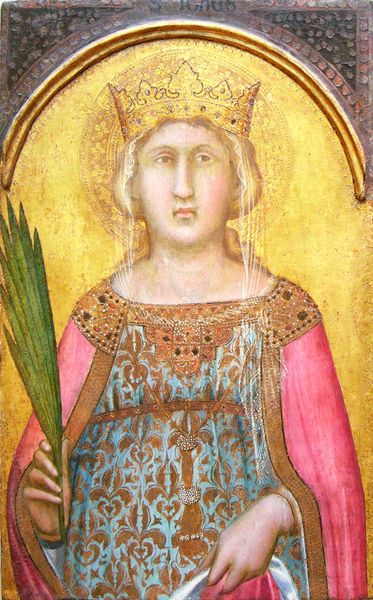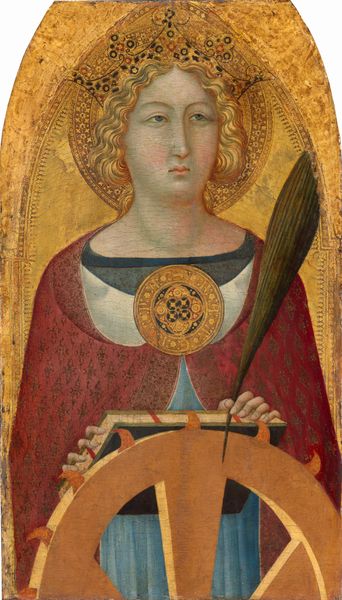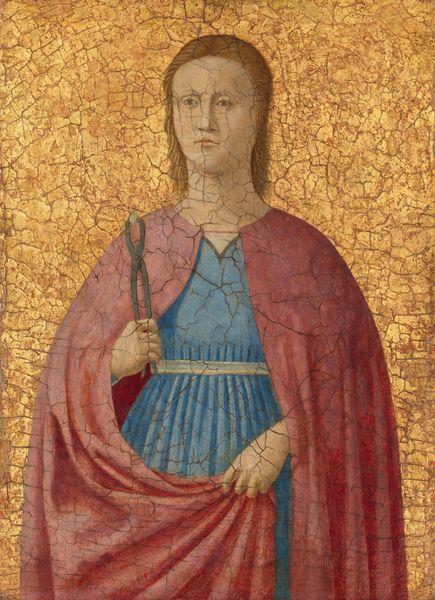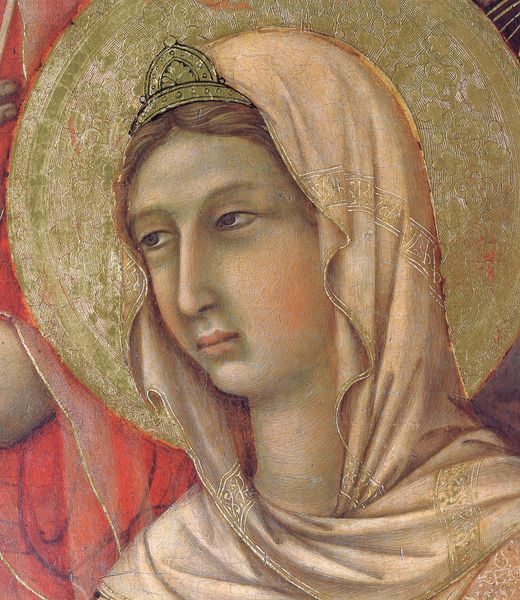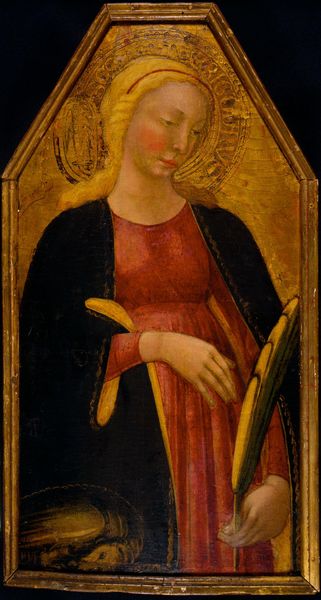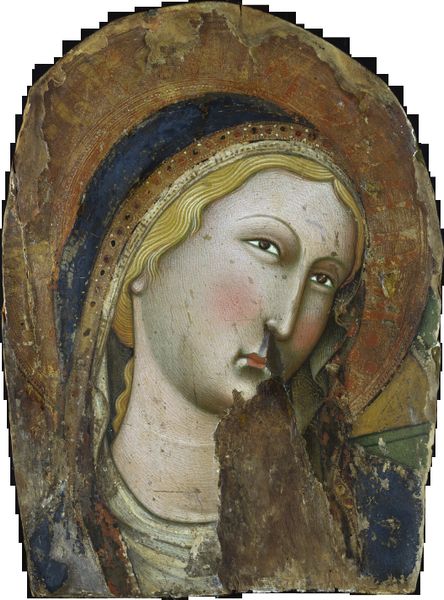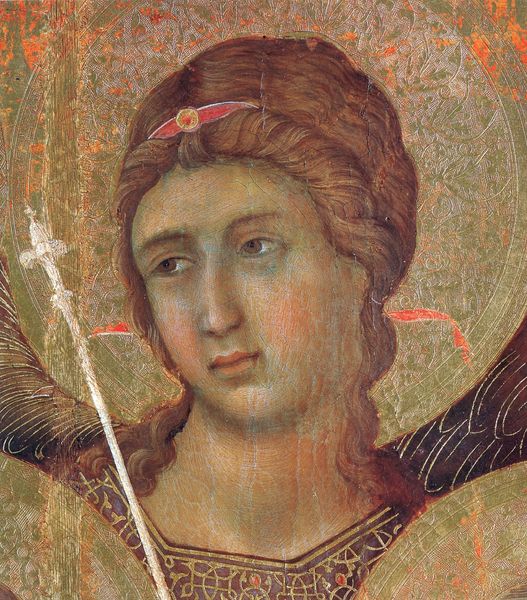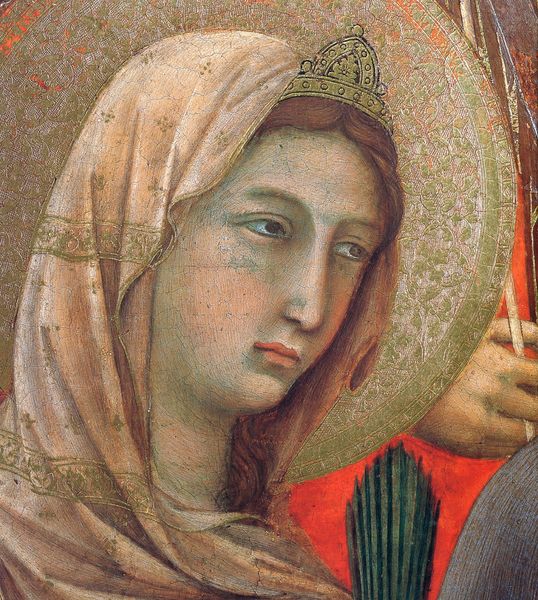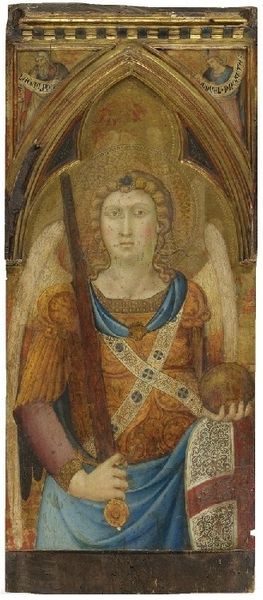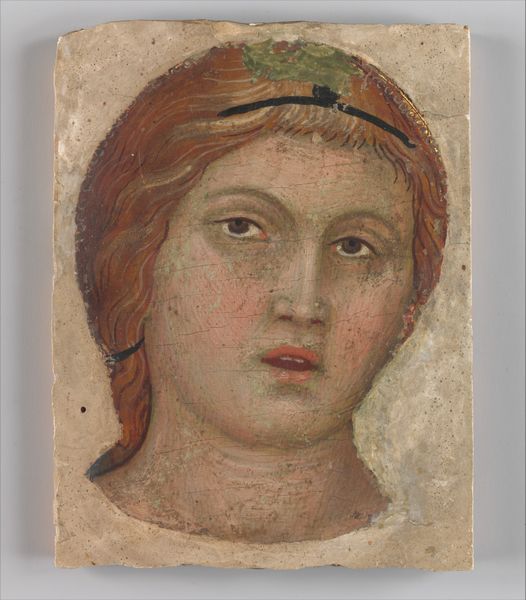![Saint Catherine of Alexandria, with an Angel [right panel] by Pietro Lorenzetti](/_next/image?url=https%3A%2F%2Fd2w8kbdekdi1gv.cloudfront.net%2FeyJidWNrZXQiOiAiYXJ0ZXJhLWltYWdlcy1idWNrZXQiLCAia2V5IjogImFydHdvcmtzL2ZjNDdmZjRhLWQzZjQtNGIzMi1hZGQzLWExYWZmM2I2MDM4OS9mYzQ3ZmY0YS1kM2Y0LTRiMzItYWRkMy1hMWFmZjNiNjAzODlfZnVsbC5qcGciLCAiZWRpdHMiOiB7InJlc2l6ZSI6IHsid2lkdGgiOiAxOTIwLCAiaGVpZ2h0IjogMTkyMCwgImZpdCI6ICJpbnNpZGUifX19&w=3840&q=75)
Saint Catherine of Alexandria, with an Angel [right panel] c. 1340
0:00
0:00
#
natural stone pattern
#
toned paper
#
sienese-school
#
possibly oil pastel
#
oil painting
#
tile art
#
acrylic on canvas
#
street graffiti
#
underpainting
#
painting painterly
#
watercolor
Dimensions: painted surface: 88.1 × 41.5 cm (34 11/16 × 16 5/16 in.) overall: 92 × 44.1 cm (36 1/4 × 17 3/8 in.)
Copyright: National Gallery of Art: CC0 1.0
Curator: Let’s take a look at “Saint Catherine of Alexandria, with an Angel,” a panel painting dating from about 1340, by Pietro Lorenzetti. It's a compelling example of Sienese art from the early 14th century. Editor: The first thing that strikes me is how serene she seems, almost detached. It's not the kind of grand, dramatic religious art you sometimes see. There's a gentleness in her face. Curator: The painting really captures the elegance of the period's artistic style, moving from Byzantine austerity toward more humanized forms. Look closely at the patterned fabric of her cloak. Editor: Right? The details are exquisite, it's almost dizzying – like looking into a garden maze! I love the tension between this incredibly detailed fabric and her remarkably blank expression. Almost robotic in its stoicism. Curator: Her status as both a princess and a martyr also plays a role in our perception. Saint Catherine was an important figure of female agency in the Middle Ages, though narratives have changed over time. Her associations with books and learning gave her powerful intellectual currency. Editor: I get that sense of controlled power; she looks formidable despite her softness. I wonder if Lorenzetti wanted to portray her as someone approachable and awe-inspiring at the same time? The fact that the smaller figure at the top holds the symbolic palm adds an interesting touch of dramatic foreboding. It says “future saint” in case you weren’t sure, which actually seems a bit cynical! Curator: This particular painting speaks to broader debates around female roles in religious and secular society, especially in the context of increasing urbanization and educational opportunities. How images like these helped propagate ideas about those roles. Editor: Thanks, knowing the history does help round it out. Still, I think it’s ultimately about finding some stillness and serenity and maybe feeling like an intelligent, calm observer, and honestly I love being talked down to by 14th-century religious figures.
Comments
No comments
Be the first to comment and join the conversation on the ultimate creative platform.
